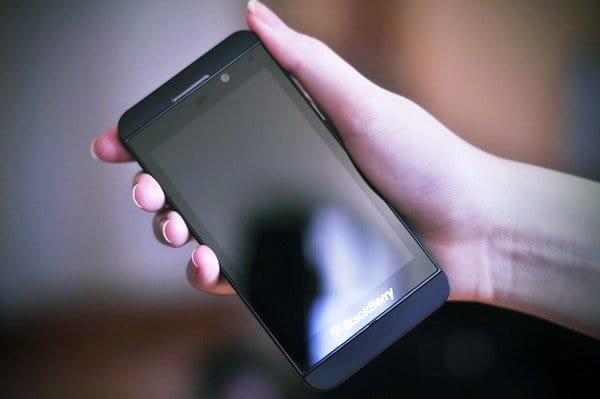Introduction
This is by far the most important product launch in the history of Research in Motion (now known as BlackBerry). Not only is the BlackBerry Z10 simply a new smartphone for the company, it runs a brand new platform, comes at a critical time, and has undergone a huge redesign. BlackBerry as you know has changed forever. It is in no way similar, related, reminiscent, or even vague acquaintances with older BlackBerry smartphones. It simply shares a similar BlackBerry philosophy and name.
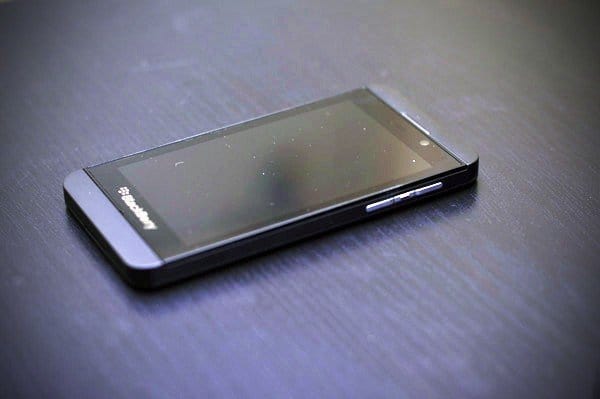
This review is organized into two major sections: Hardware and Software. Both are completely new and require in-depth analysis and discussion. I will try my best to take a look at both.
Hardware
Specifications
| Dimensions | 130mm x 65mm x 9mm |
| Weight | 136 grams |
| CPU | Dual-core 1.5 GHz Qualcomm MSM8960 |
| RAM | 2GB |
| Internal Flash memory | 16GB |
| Micro SD? | Yes, up to 32GB |
| Network | Quad band LTE, Tri-band HSPA+, Quad band Edge |
| OS | BlackBerry 10 |
| Battery Size | 1800 mAh |
| Screen Size | 4.2″ |
| Screen resolution | 1280×768 |
| Pixels per inch | 356 |
| Rear Camera | 8MP recording at 1080p |
| Front Camera | 2MP recording at at 720p |
| Charging Port | USB 2.0 |
| Micro HDMI | YES |
| NFC | Yes |
| DLNA | Yes |
| Bluetooth | Yes, 4.0 LE |
| Wifi | Yes, 2.4/5.0 Ghz with hotspot |
| Magnetometer | Yes |
| Gyroscope | Yes |
| Proximity Sensor | Yes |
| Light Sensor | Yes |
| Accelerometer | Yes |
With a modern dual-core Snapdragon CPU running at 1.5 GHz, the Z10 flies along and maintains 60fps of BlackBerry 10 goodness throughout 99% of the entire OS. It’s great to see BlackBerry include 2 GB of RAM in the Z10 (especially when 1 GB was originally rumored), equivalent to the top of the line smartphones these days. This should allow for great multitasking and a future-proof handset.
The Z10 comes with all the usual sensors, bells, and whistles that you’d expect in any smartphone. We will cover them in the following sections.
Design
The BlackBerry Z10 looks like the iPhone 5. There, I said it. And it’s undeniably true. The shape is the same, the size is nearly the same, the colors are the same, the rear camera and flash positions are the same etc. But this isn’t a bad thing, nor did BlackBerry copy Apple. The iPhone 5 was only just released about 4 months ago, and you can’t design, produce, and ship millions of smartphones in the span of 4 months. It simply isn’t feasible. If it is an iPhone look-a-like, it’s a damn good one.
There are also some differences that you’ll be bound to notice. The Z10 is slightly thicker, the branding is significantly different, the textures are different, the button and port configurations are completely different, the Z10 has no front-facing buttons etc.
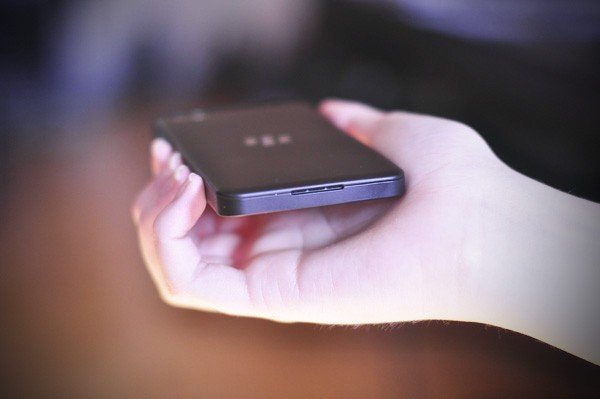
The BlackBerry Z10’s design is a complete encapsulation of BlackBerry’s modern image. The front of the Z10 is dominated by a 4.2” touchscreen, along with matte black top and bottom bezels. The lack of buttons, and the simple lines give the device an uncommon industrial elegance. While it may sound contradictory, one look at the Z10 and it makes complete sense.
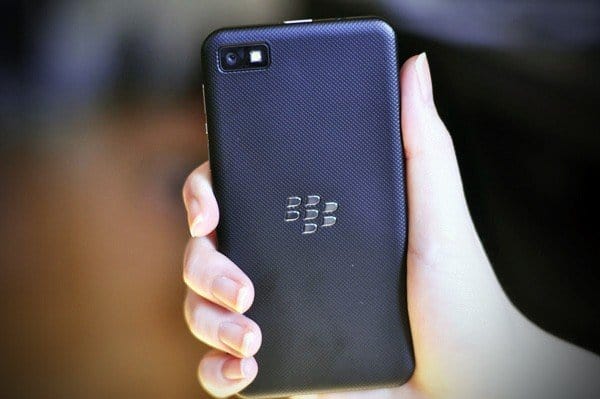
Take a look at the back of the phone and you’ll immediately want to touch it. The soft, textured backing found here is almost unheard of on other smartphones. While you’re usually dealing with a hard metal or plastic feel, the Z10’s back surface alone kicks it up into the big leagues. The textured rubber feels more of the steering wheel of a Ferrari than a smartphone.
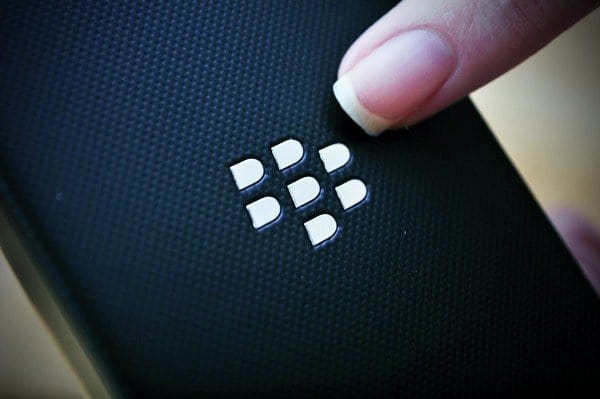
Overall, I’ve yet to see many smartphones feel and look as good as the Z10. It’s really right up there as well with some of the best like the iPhone 5.
Dimensions and Weight
When it comes to smartphones, larger and thinner is the trend. While the Z10 isn’t the thinnest smartphone ever made, it is still the thinnest BlackBerry ever made. At 9mm, it sits firmly in the realm of mediocrity these days. Don’t let the sting of the word “mediocre” mislead you. Most times, uber-thin smartphones come at a price (such as battery life). The battery is a large reason behind the thickness of a phone, and BlackBerry didn’t want to compromise on battery life.

The lateral size is obviously proportional to the screen size, and with a 4.2-inch screen, the smartphone is a great size. It is slightly larger than the iPhone 5, but noticeably smaller than the Samsung Galaxy III. BlackBerry has hit the sweet spot in term of size. The Z10 is a great device for multimedia and you won’t feel like a clown if you want to make a call or take a picture (which is becoming increasingly difficult to avoid these days)
The Z10 weighs exactly 136 grams. It feels lighter in the hand that you’d think, but not ridiculously light like the iPhone 5. Personally, the weight of a smartphone makes little difference below 150 grams so I have no problem with the weight as it is.
What is important to me is the weight distribution. A smartphone should weight more at the bottom than at the top, allowing for a better balanced phone while typing. This is true for the Z10. While it isn’t perfectly balanced, it’s good to know that BlackBerry has kept this in mind.
Radios
4G LTE
For any modern smartphone to be taken seriously, it must have 4G LTE support (let’s pretend the Nexus 4 doesn’t exist). The Z10 isn’t going to be the exception. While the older BlackBerry smartphone we’re marketed as “4G”, it was really just 3G+ service that carrier marketing departments got carried away with.
But what does this mean? Well, it means that the Z10 is up there with the best of the best in terms of data speeds. While it really depends on the carrier, location, time of day, and everything short of phases of the moon, 4G LTE speeds are generally in a class of their own.
In our testing, we’ve seen solid download speeds of 54 Mbps and 11 Mbps upload speeds on AT&T. Fast by any standard.
HSPA+ at 21 Mbps
In the event that LTE coverage isn’t available, you can default back to good ol’ HSPA+. The speeds aren’t bad as the service peaks at a theoretical 21mbps, giving you about half that on a good day. If you’re got the benefits of dual-carrier downlink technology, you could even end up doubling your network speeds, getting you up into 4G LTE range under good conditions.
EDGE
Away from civilization? No problem, the Z10 can even fall back on the slow, but pervasive EDGE service. This is assuming that your carrier supports the older technology.
Ports and Connectivity
The Z10 is charged through a microUSB port on the side of the phone. While I would have liked to see it on the bottom, it’s no big deal really.
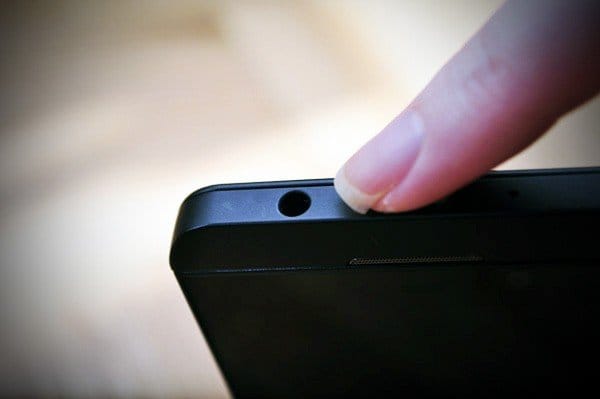
As far I know, there is no USB OTG support at the moment for this port. Right beside the charging port, BlackBerry has included a micro HDMI port for connecting the Z10 to an external display.
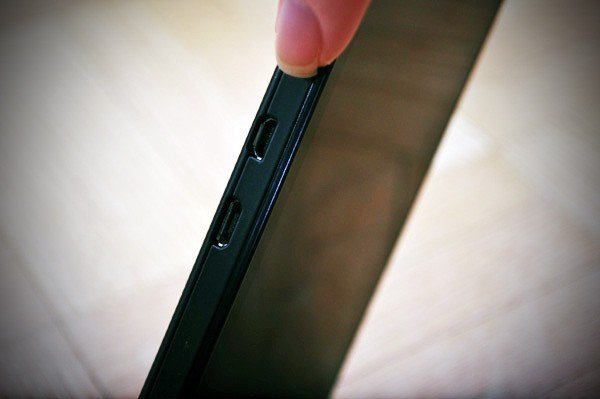
The last port is the headphone jack on top of the phone. This may come across as either good news or bad news depending on which side of the headphone-jack-location debate you’re on. I can honestly say that as long as it’s not on the side so the cable doesn’t get tangled inside pockets, I’m a happy camper.
SIM and SD card
In a triumph of practicality and value, the Z10 offers a microSD slot for a variable amount of removable storage up to 32GB. This brings the grand total of storage up to 48 GB.
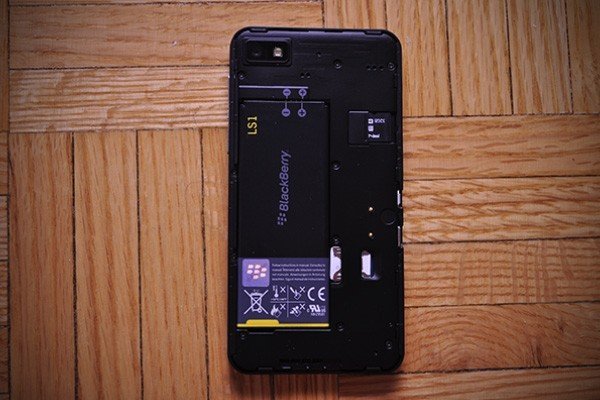
Both the SD card and the SIM card are neatly tucked away in the device. The microSD card is hot-swappable as it doesn’t require the battery to come out first.
NFC
Taking queues from previously engineering in the Bold 9900 series, the NFC antenna is embedded into the battery door. This design should save space inside the device. You can see the two contacts in the photo below.
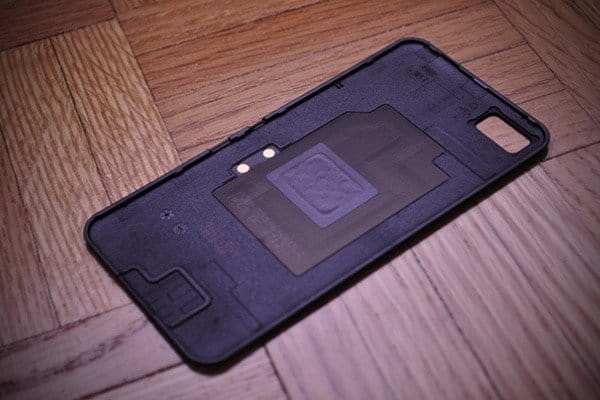
Screen
The screen of the Z10 is something to marvel. At just under a million pixels crammed into a 4.2” display, the result leaves pretty much puts every other smartphone in the world to shame. With a pixel density of about 356 pixels per square inch, the Z10 bests the iPhone’s “not-so-retina” screen and all other smartphones with displays under 5 inches in size.

The viewing angles are excellent, and the brightness is very good. On the old Torch 9860, the colour of the screen would shift at sharp viewing angles from blue to yellow. This isn’t a problem anymore on the Z10. The screen does dim slightly when rotating at sharping viewing angles, but is a very minor effect. Plus, complaining about slight changes in the screen color/brightness at >170 degrees viewing angles is just ridiculous.
Buttons
At the top of the device, there is a slim brushed aluminum lock button. The right side of the Z10 sports the familiar volume keys with the mute button between them. The mute button has a bump on it which helps you navigate the volume keys without looking. The keys are identical to the buttons on the Dev Alpha B device that has been given out to developers for app testing.

The buttons provide a decently satisfying click when pressed and have just about the right feel to them. The rest of the device lacks any other buttons, in an effort to streamline the design and focus on gestures to accomplish tasks. While I agree that it does help with the design, I am a huge fan of the dual convenience keys on older BlackBerrys. While the gestures and UI do allow you to be quite efficient, sometimes browsing for a specific app you’ve installed is less fun than a push of a button.
Speakers
Smartphone speaker are a bit of strange topic as they obviously aren’t going to be very good. The nature of loudspeaker systems is that proper projection of the entire acoustic spectrum from 20-20kHz is incredibly difficult on such a small device.
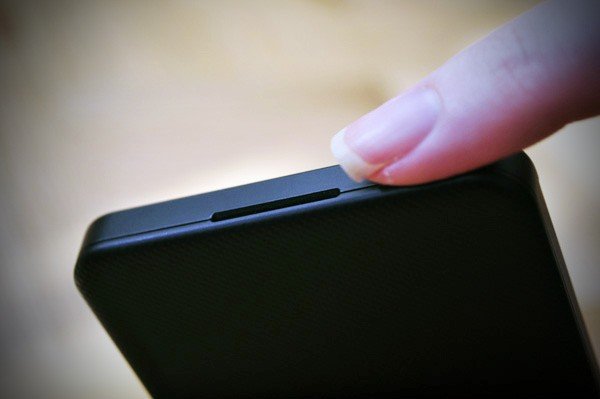
That said, the speakers are adequate and are probably as good as most smartphones. The lows are slightly muffled but audible. The mids are crystal clear, and the highs are slightly tinny. Unsurprising for a smartphone, but a decent offering none-the-less.
During a phone call, the call quality seemed to be good. I wouldn’t call it outstanding, but its definitely at least par for the course in the smartphone world. The calls came out clear and I had no problems hearing the other person on the line.
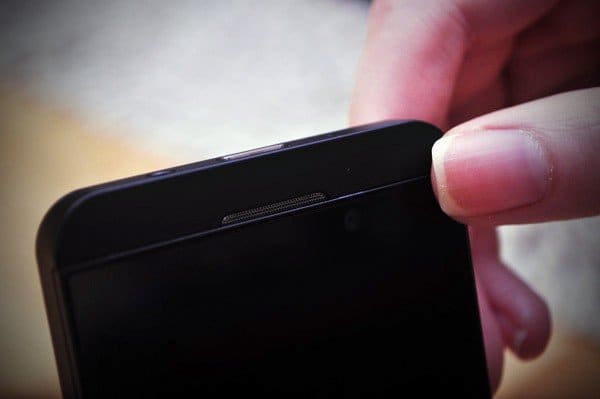
Battery
Smartphone batteries are designed to last the entire day for the average user. Abusers, on the other hand, take this matter quite seriously. This is especially true with BlackBerry users. So with intense browsing, BBMing, music playing, video chatting, etc., the Z10 has to be able to last as long as possible.
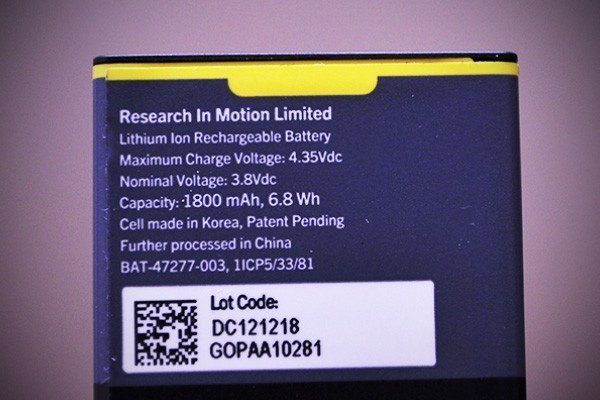
With 1800 mAh at the ready, the Z10’s battery life will last most people the entire day. The battery capacity is larger than the iPhone 5, but smaller than the larger Samsung Galaxy smartphones. You’d then expect the Z10 do fare reasonably well throughout the day, and you’d be right.
Expect about 8 hours of talk time, and 305 hours of standby time. For audio playback, you’re looking at a solid 60 hours. For video, its down to about 10 hours.
In my experience, the battery life has been average for a smartphone. The battery meter does act funny for the first few days as it calibrates itself, but after that you should be set.
Camera
The rear-facing camera on the Z10 contains an 8MP auto-focus sensor capable of recording 1080p video. The sensor is back-side illuminated, paired alongside a Milbeaut Fujitsu M-9MO image signal processor with a 64MB frame buffer. The lens system itself is composed of 5 elements, providing an impressive aperture of F/2.2. There is, of course, a single flash for those low-light situations.
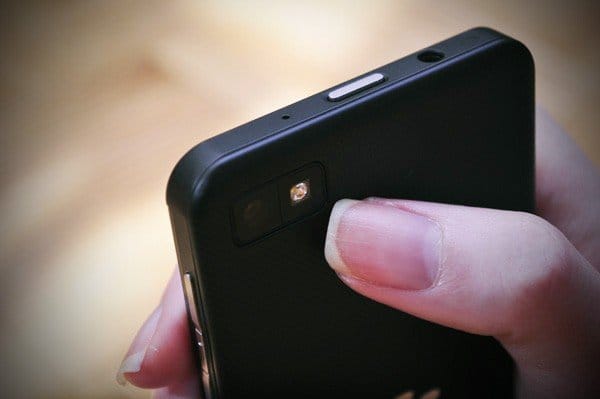
The Z10 has a proprietary “Enhanced Super Resolution 5X Digital Zoom” that allows you to pinch to zoom while framing a picture in the camera. The rear-facing camera also comes with 4DOF video stabilization to keep your shaky hands from creating the Blair Witch Project 3 by accident.
The front-facing camera is less sophisticated (and doesn’t need to be) with only a 2MP sensor. It does come with image and video stabilization, 3X digital zoom and can record 720p video.
Summary
The BlackBerry Z10 definitely a huge step up from BlackBerry 7 smartphones in many respects. For most purposes, it’s not even comparable. It has officially kicked itself up into the league of modern smartphone platforms such as Android, Windows Phone 8, and iOS. When it comes to notifications, design, stability, hardware, security, user interface, and speed, the Z10 gets top marks.
The hardware on the Z10 is a solid offering and consistent with the specifications of most high-end smartphones.
If you’re asking if the Z10 will save BlackBerry, you’re assuming that the fate of BlackBerry rests on a single phone. There’s also a good chance you thought the Playbook was a failure. And you’d be wrong on both counts. Success is not measured by the battles won, it is measured by how much you tip the scales in your favor. Trends in smartphone platform market share are measured in years and it takes years to change the game. It is rare for any closed platform to remain on top for very long.
BlackBerry started failing on its phones ever since BlackBerry 5 smartphones years ago. Every older BlackBerry since then has missed the boat trying to improve a severely limited older platform, until the Z10. The BlackBerry Z10 is a huge step in the right direction after the PlayBook, which was basically designed as an app launcher for the new platform. I truly believe that BlackBerry has a winner with this smartphone in the long run. It won’t be the best selling-smartphone of the year, and it won’t be the most liked either. But its BlackBerry that has momentum to gain with BlackBerry 10. BlackBerry isn’t just back, they’re ahead of the game.
You may want to see our full review of BlackBerry 10 operating system as well.

